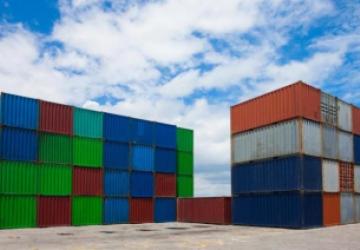Weekend Reading: Containers

The software enabling this technology comes in many forms, with Docker as the most popular. The recent rise in popularity of container technology within the data center is a direct result of its portability and ability to isolate working environments, thus limiting its impact and overall footprint to the underlying computing system. To understand the technology completely, you first need to understand the many pieces that make it all possible. Join us this weekend as we learn about Containers.
Before we get started, many ask what the difference is between a container and virtual machines? Editor Petros Koutoupis explains: Both have a specific purpose and place with very little overlap, and one doesn't obsolete the other. A container is meant to be a lightweight environment that you spin up to host one to a few isolated applications at bare-metal performance. You should opt for virtual machines when you want to host an entire operating system or ecosystem or maybe to run applications incompatible with the underlying environment.
Everything You Need to Know about Linux Containers, Part I: Linux Control Groups and Process Isolation
Truth be told, certain software applications in the wild may need to be controlled or limited—at least for the sake of stability and, to some degree, security. Far too often, a bug or just bad code can disrupt an entire machine and potentially cripple an entire ecosystem. Fortunately, a way exists to keep those same applications in check. Control groups (cgroups) is a kernel feature that limits, accounts for and isolates the CPU, memory, disk I/O and network's usage of one or more processes.
Everything You Need to Know about Linux Containers, Part II: Working with Linux Containers (LXC)
Part I of this Deep Dive on containers introduces the idea of kernel control groups, or cgroups, and the way you can isolate, limit and monitor selected userspace applications. Here, I dive a bit deeper and focus on the next step of process isolation—that is, through containers, and more specifically, the Linux Containers (LXC) framework.
AWS Quickstart for Kubernetes
Kubernetes is an open-source cluster manager that makes it easy to run Docker and other containers in production environments of all types (on-premises or in the public cloud). What is now an open community project came from development and operations patterns pioneered at Google to manage complex systems at internet scale.
An Interview with Heptio, the Kubernetes Pioneers
Editor Petros Koutoupis spent some time chatting with Craig McLuckie, CEO of the leading Kubernetes solutions provider Heptio. Centered around both developers and system administrators, Heptio's products and services simplify and scale the Kubernetes ecosystem.
The Search for a GUI Docker
Docker is everything but pretty; let's try to fix that. Here's a rundown of some GUI options available for Docker.
Managing Docker Instances with Puppet
This article focuses on how to manage Docker images and containers with Puppet.
Concerning Containers' Connections: on Docker Networking
In this article, Frederico Kereki goes over some details of setting up a system based on several independent containers, each providing a distinct, separate role, and he explains some aspects of the underlying network configuration. You can't think about production deployment without being aware of how connections are made, how ports are used and how bridges and routing are set up, so I examine those points as well, while putting a simple Web database query application in place
This article was originally published in September 2018 and updated February 2019 to include additional articles.










